Use this site to choose topics for your news report presentation:
ABS-CBN News
https://news.abs-cbn.com/
GMA News
https://www.gmanetwork.com/
Workshop Class - Being a Global Citizen: is a content class, focusing on Philippine and Japanese Society and Culture. This class is taught in English, and as such, English is the language used in discussion, presentation and writing. Nanzan University Lecturer: Abigail B. CAPITIN-PRINCIPE
Wednesday, December 12, 2018
A guide to New Year traditions in Japan from Japan Today
A guide to New Year traditions in Japan
By Haruka Masumizu
TOKYO
The New Year is just around the corner. For many non-Japanese, especially newcomers to Japan, many of the customs and traditions of New Year may seem hard to understand. New Year or Oshogatsu is the most important holiday period in Japan for families and it is rich in tradition. If you're lucky enough to be invited by your Japanese friends to join them, you'll be in for some interesting experiences.
Here is our annual guide to help you understand New Year customs in Japan.
New Year’s Eve - Omisoka (大晦日)
Omisoka is the Japanese expression for New Year’s Eve. In order to start off the new year with a fresh mind, families and kids come together to clean up the entire house (called osoji - big cleaning) and use the last few days of the old year to make preparations for osechi ryori (see below), special decorations and rituals for New Year’s Day. As many people go back to their hometowns during this time, it might be interesting for you to see usually busy and hectic Tokyo suddenly become so quiet and empty.
Joya no Kane (除夜の鐘)
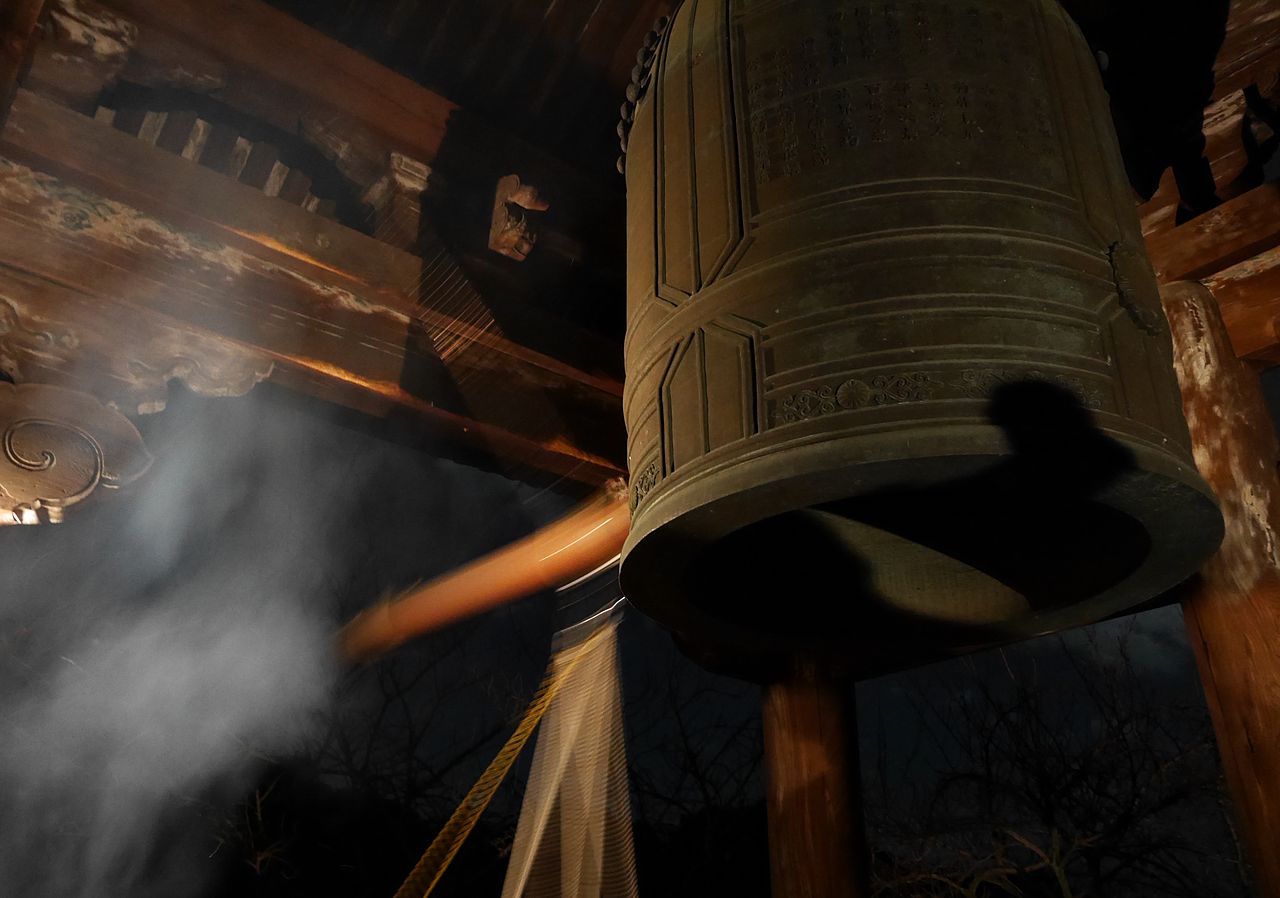
Photo: Wikipedia
But do you know why they strike the bell exactly 108 times? In Buddhism, it is believed that human beings are plagued by 108 types of earthly desires and feelings called Bonnou, exemplified by anger, adherence and jealousy. Each strike of the bell will remove one troubling Bonnou from you.
The kanji Jo (除) means “to throw away the old and move on to the new” and Ya (夜) means “night.” So, it is the perfect night to leave your old self behind and commence the new year with new resolutions and a clear head. By the time you count the 108th peal, you are ready to start the new year refreshed without anything troubling your mind -- in theory.
Toshikoshi-soba (年越し蕎麦)
The tradition of eating soba (Japanese noodles) on New Year’s Eve is said to have become common during the Edo era (1603-1868). When soba is made, the dough is stretched and cut in a long and thin form, which is said to represent a long and healthy life. Interestingly, as soba is cut easily compared to other types of noodles, it also symbolizes a wish to cut away all the misfortunes of the old year in order to commence the new year refreshed.
Kadomatsu (門松)
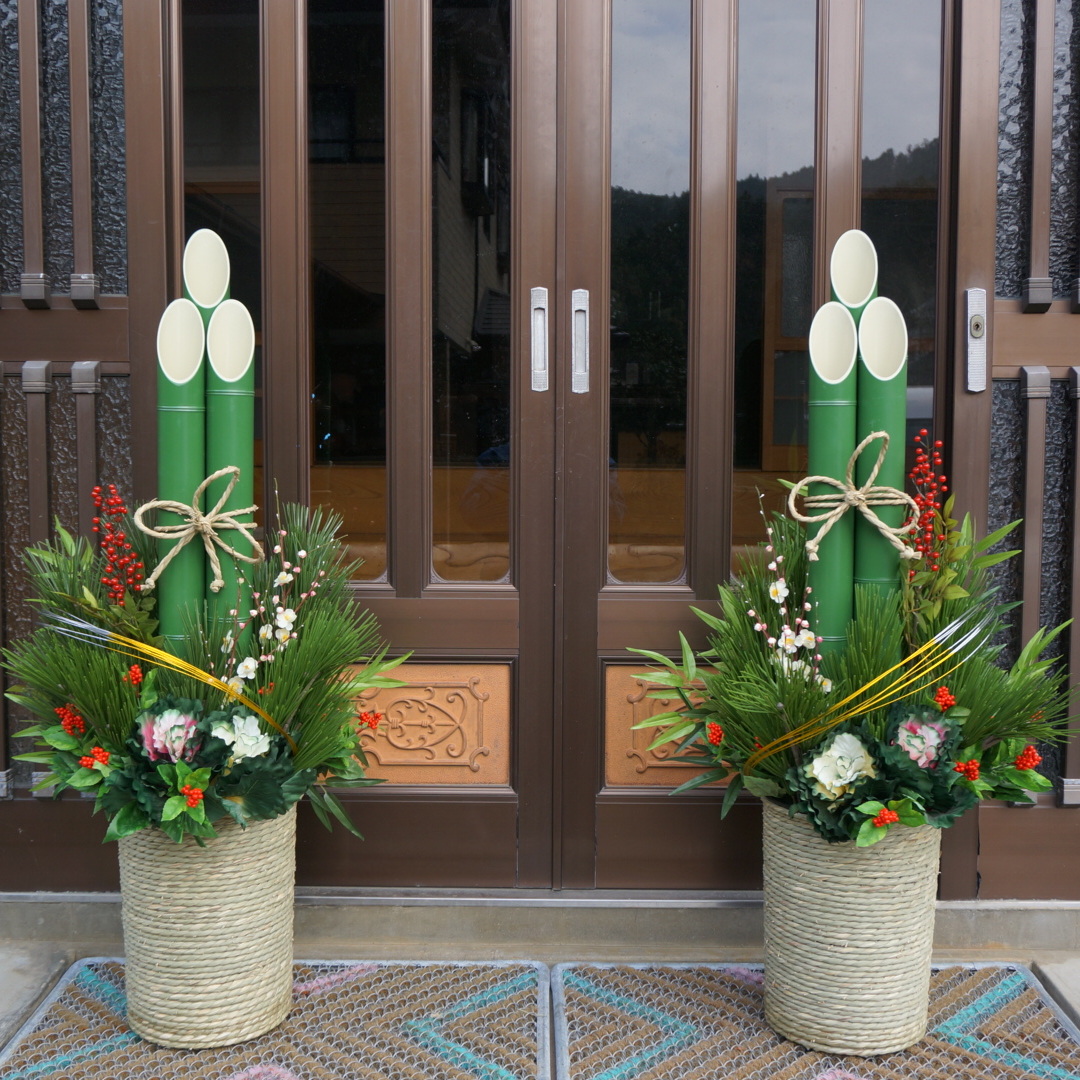
Kagami-mochi (鏡もち)

Photo: Wikipedia
However, mirrors in Japan a long time ago had a round shape, and were often used for important Shinto rituals. As mirrors are believed to be a place where gods reside, these mochi (rice cakes) are shaped like an ancient round mirror to celebrate the new year together with the gods.
On top of the rice cakes is a type of orange called daidai (now replaced with mikan most of the time). When written with different kanji “代々”, it means “over generations,” representing a wish for prosperity of descendants over generations.
The shimekazari (しめ飾り) or New Year wreath, made of twine, twigs, paper strips and a mikan, is also a common sight at entrances to homes and offices.
New Year’s Day - Ganjitsu (元日)
You might be confused by two different yet similar words, ganjitsu (元日) and gantan (元旦). Even if you ask your Japanese friends what the difference is, they will probably say “I’ve never thought about that...don’t they mean the same thing?”
While ganjitsu refers to the whole 24 hours of New Year’s Day, gantan only refers to the morning of New Year’s Day. The second kanji “旦” represents the sun coming up over the horizon -- sunrise.
Ganjitsu is a pretty busy day for Japanese families. After breakfast (osechi ryori) with all the relatives, they visit shrines and temples and shop for New Year’s special sales ... but each of these traditions has a hidden meaning, purpose and sometimes complex way to conduct it.
Osechi Ryori (おせち料理)
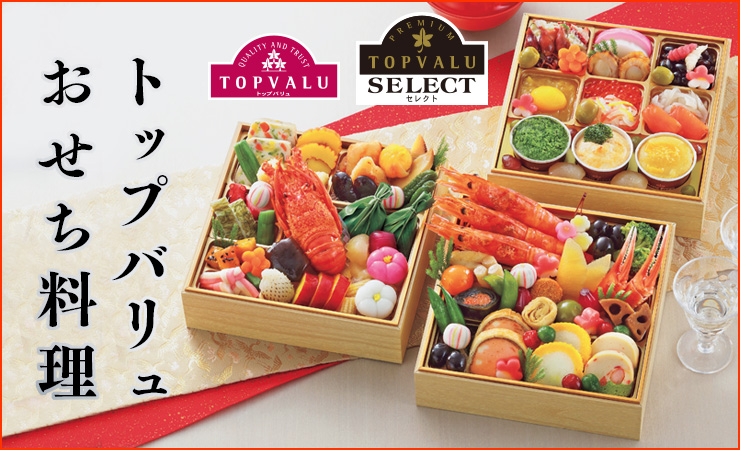
For example, renkon (lotus root) represents a hope for a good and happy future without obstacles ahead, because you can see the other side (the future) through the holes without obstacles. Click here for an explanation of the various dishes.
Iwai-bashi (祝箸)
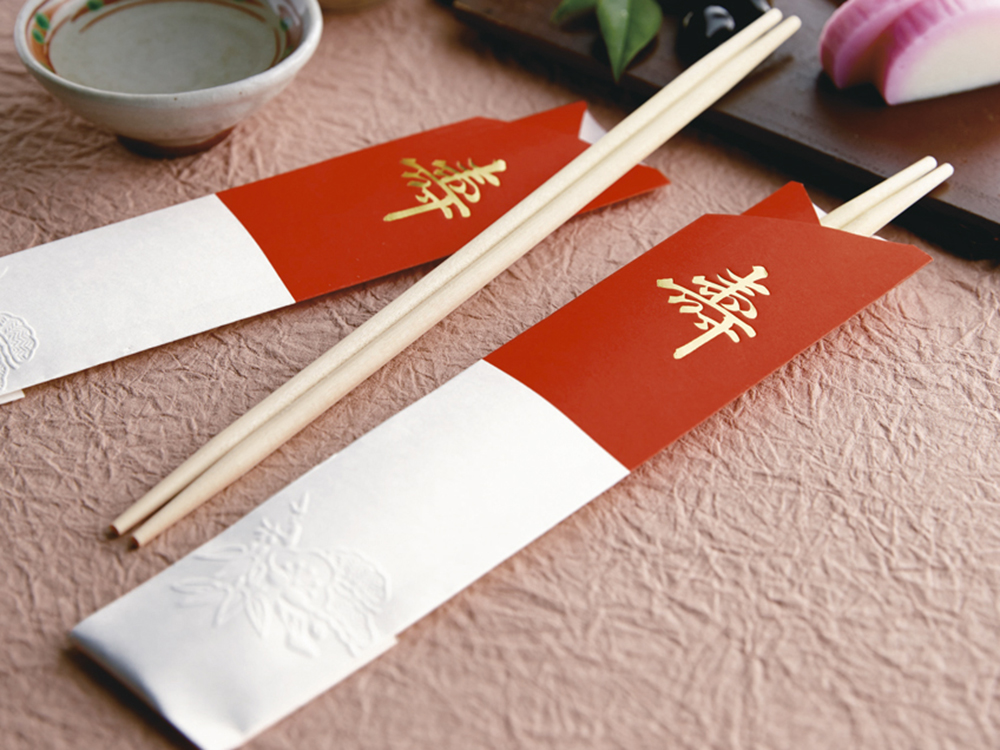
Osechi ryori is something that is offered to the deity first, who then allows you to share it so you’ll be blessed with a fruitful year ahead. So, even if you think it is efficient to use both sides of the chopsticks to get some food from the shared plate, it will be considered disrespectful toward the deity.
Otoso (お屠蘇)
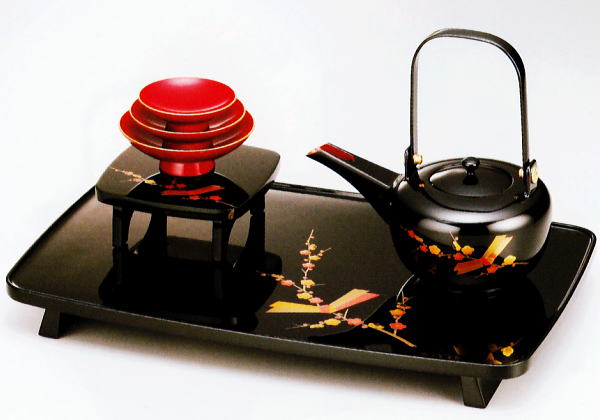
The tradition of otoso, which was originally imported from the Tang dynasty in China, where this type of sake was used for medicinal purposes, had been practiced as a new year ritual among the Heian nobility. It was only during the Edo era that it became a commoners’ practice.
When you drink otoso, families share the same three special cups. The drinking order generally starts from the youngest person of the group and ends with the oldest, whose purpose is to allow older people to absorb some vitality from the young people.
Otoshidama (お年玉)
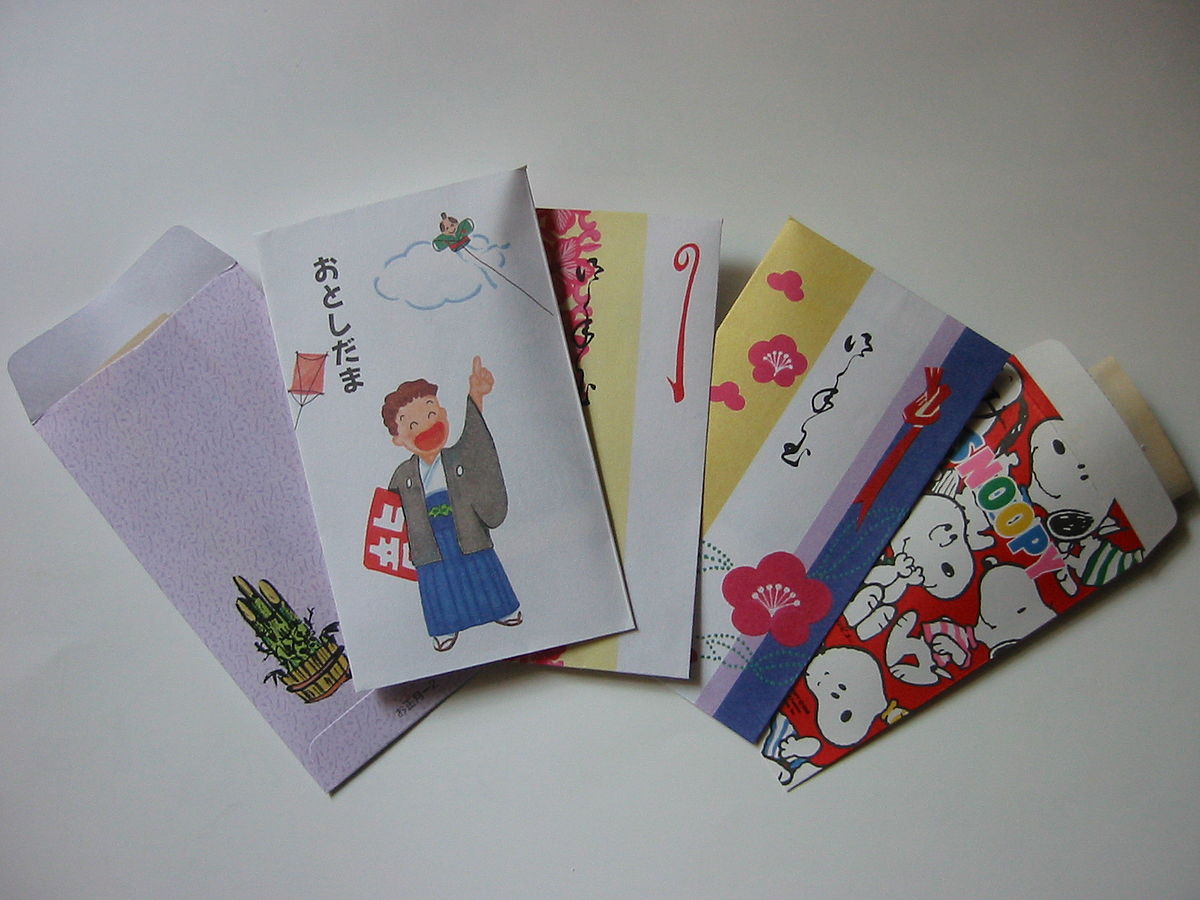
Photo: Wikipedia
The tradition originated as an offering of rice cakes called kagami mochi to toshigami-sama, a New Year deity. Those rice cakes, given from parents to children, were called toshidama in the past, and they came to be replaced with small toys, and then with money today.
Hatsumode (初詣)
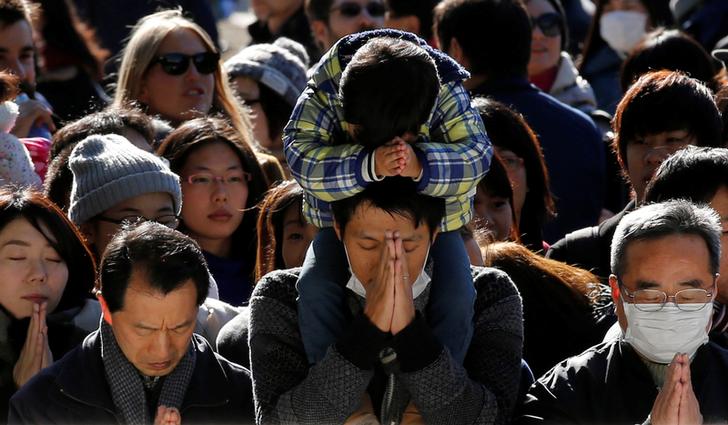
Photo: Reuters
When you make a prayer at the altar, you might be confused over how the prayer is specifically conducted by Japanese people. Here’s what to do: First, throw some coins into a box in front of the altar, ring the bell using the rope hanging down from it, bow twice, clap your hands twice in front of your chest, and lastly bow one more time.
Nengajo(年賀状)
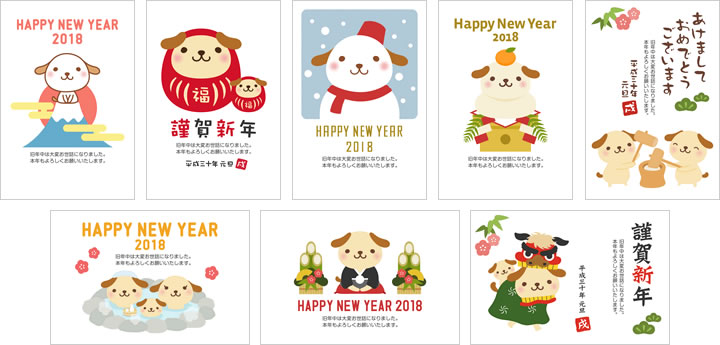
Nengajo generally start with a standard sentence Akemashite Omedeto Gozaimasu (Happy New Year) and Kotoshi mo Yoroshiku Onegaishimasu (Thank you for all your support for this year in advance.) Additionally, people tend to write how they have been doing recently or their new year resolutions along with their family photo or an illustration of the coming year’s sign from the Chinese zodiac.
But greetings from your friends are not the only purpose of nengajo. All nengajo postcards have lottery numbers on them, and when delivered, the holders of the winning numbers will be able to receive various prizes, which include some expensive items like travel tickets and electronic devices.
However, in this digital age, some young people consider sending postcards as old school. For such people, a new service is becoming increasingly popular -- the service that allows people to send and receive nengajo quickly by email or by some SNS apps, and even to attach a video clip to the nengajo.
Fukubukuro (福袋)

Some popular shops such as 109 in Shibuya have an incredibly long queue in front of them hours before they open on New Year’s Day. The value of the items is often 50% more than the selling price. If you don't mind waiting and are prepared for a stampede, New Year’s Day is a great shopping opportunity.
© Japan Today
Wednesday, November 21, 2018
The Filipino Parol (Christmas Lantern)
https://themixedculture.com/2013/12/15/parol-filipino-christmas/
Filipino Christmas celebration is colorful, lively, full of traditions, bright and definitely twinkling. One of the most iconic symbol of Filipino Christmas spirit, is the Christmas lantern or locally known as “paról”. The star-shaped lanterns are displayed hanging outside the house, along the busy streets of the cities and even in provincial towns and small villages. May it be a parol with simple or intricate designs, for Filipinos it is an expression of shared faith and hope. It also symbolizes the triumph of light over darkness and Filipinos’ goodwill during Christmas season.
For Filipinos, parol making and hanging them outside is a representation of the star of Bethlehem that guided the Three Wise Men to the manger of the newly born Jesus Christ. The origin of paról can be traced back during the Spanish era in the Philippines, when the Spaniards brought Christianity to the islands. Parols were initially used to light the way to church to faithfully attend the 9-day Simbang Gabi or Misas de Aguinaldo, which begin on the 16th of December, a devotion for petition of special favors. After coming home from hearing the mass, instead of putting away the lantern somewhere else, people would hang it outside the house.
Filipino Christmas celebration is colorful, lively, full of traditions, bright and definitely twinkling. One of the most iconic symbol of Filipino Christmas spirit, is the Christmas lantern or locally known as “paról”. The star-shaped lanterns are displayed hanging outside the house, along the busy streets of the cities and even in provincial towns and small villages. May it be a parol with simple or intricate designs, for Filipinos it is an expression of shared faith and hope. It also symbolizes the triumph of light over darkness and Filipinos’ goodwill during Christmas season.
For Filipinos, parol making and hanging them outside is a representation of the star of Bethlehem that guided the Three Wise Men to the manger of the newly born Jesus Christ. The origin of paról can be traced back during the Spanish era in the Philippines, when the Spaniards brought Christianity to the islands. Parols were initially used to light the way to church to faithfully attend the 9-day Simbang Gabi or Misas de Aguinaldo, which begin on the 16th of December, a devotion for petition of special favors. After coming home from hearing the mass, instead of putting away the lantern somewhere else, people would hang it outside the house.
Paróls are star-shaped lanterns and traditionally made of bamboo, papél de japón (Japanese paper) and illuminated with candle or kalburo (carbide). As times goes by, the lantern evolved into more intricate, lavish and brightly lit Christmas ornament. Aside from the traditional design of parols, other materials are used such as capiz shells with elaborated lights became popular too. Adding to the meaning of parol, the lantern also demonstrates the craftsmanship of Filipinos. Many communities, such as villages, schools, and groups hold competitions to see who can make the best paról. In the province of Pampanga, an annual Giant Lantern Festival is held, which attracts various craftsmen from across the archipelago.
Yuletide season is definitely bright and twinkling in the Philippines, no wonder with the paról, it became the Festival of Lights. To appreciate and see the peak of the Festival of Lights in the Philippines, one must travel at night from December 16th up to January 6th. All kinds of paróls will make your holidays merrier and bright. Filipinos’ Christmas lantern, a tradition, an art and an iconic symbol of Christmas.
How to make a Filipino Parol:
Wednesday, October 17, 2018
How did Christmas start?
https://youtu.be/IoBM3XQCC2g
This video shows how the tradition of Christmas began in many parts of the world.Tuesday, October 16, 2018
Christmas in the Philippines
 Christmas in the Philippines
Christmas in the Philippines 

People in the Philippines like to celebrate Christmas for as long as possible! The playing of Christmas carols in shops can start in September! The formal Christmas celebrations start on 16th December when many people go the the first of nine pre-dawn or early morning masses. The last mass is on Christmas day. The Christmas celebrations continue to the First Sunday in January when Epiphany or the Feast of the Three Kings is celebrated.
In the Philippines the early masses held before Christmas are called the 'Misa de Gallo' or 'Simbang Gabi' in Filipino.
Most Filipinos are Christians with about 80% of people being Catholics. It's the only Asian country with so many Christians. Because of this, Christmas is the most important holiday in the Philippines. December is actually one of the 'cooler' months of the year in the Philippines. The Philippines only has two real seasons, wet (June to October) and dry (April and May). December is one of the months in between the wet and dry seasons.
Christmas Eve is very important in the Philippines. Many people stay awake all night into Christmas day! During Christmas Eve evening, Christians go to church to hear the last 'simbang gabi' or the Christmas Eve mass. This is followed by a midnight feast, called Noche Buena.
The Noche Buena is a big, open house, celebration with family, friends and neighbors dropping in to wish everyone a Merry Christmas! Most households would have several dishes laid out and would normally include: lechon (roasted pig), ham, fruit salad, rice cakes (bibingka and puto bumbong are traditional Christmas foods) and other sweets, steamed rice, and many different types of drinks.
http://www.whychristmas.com/cultures/philippines.shtml
Other links:
http://edition.cnn.com/2012/12/05/world/asia/irpt-xmas-philippines-traditions/
http://www.filipiknow.net/facts-about-christmas-in-the-philippines/
 Decorate a Christmas Tree
Decorate a Christmas Tree 
Click on the link and decorate your Christmas Tree!Drag and Drop the decorations onto the tree! (It needs Javascript to be enabled) To clear the decorations reload/refresh the browser.
https://www.whychristmas.com/fun/decorateatree.shtml
Filipino Christmas Traditions (Learn Some Tagalog Words)
Being mostly Catholics, Filipinos start a novena (a series of nine masses) on December 16th. The masses are part of the religious tradition of Simbang Gabi, which literally means “Night Worship.”
Filipinos go to church at four o’clock in the morning and afterward have breakfast together. A traditional drink during this season is a warm ginger tea called salabat and a traditional treat is a flat but thick yellow rice cake called bibingka.
PASKO: Christmas in the Philippines
The Tagalog word Pasko derives from the Spanish word Pascua. Although the wordPascua means Easter, Pascua de Navidad refers to Christmas.
The Philippines is known for having the world’s longest Christmas season. The four months that end with the syllable –ber are considered Christmas months, which is why stores and households start playing carols on the first day of September! And the holiday season extends beyond December 31st. It doesn’t end until the Feast of the Epiphany or Three Kings (Tatlong Hari) which falls around January 6.
If Mexico has piñatas, the Philippines has its parol. Of course, a parol is not something to hit with a stick. It is a Christmas lantern, most commonly in the shape of a five-pointed star. The bamboo or rattan frame is covered with rice paper, tissue or cellophane. Almost every family either builds or buys one to hang by the window or door. Shopping malls construct giant versions of parol. Traditionally, a candle was placed inside for light to shine through; for safety reasons, people now use bulbs or even a flashlight.
Families, schools and other places also display a creche or nativity scene called belen. Christmas trees made of plastic are decorated with lights, tinsel and balls.
Families, schools and other places also display a creche or nativity scene called belen. Christmas trees made of plastic are decorated with lights, tinsel and balls.
The Tagalog word for gift is regalo, but Filipinos have a special word for “Christmas gift” — pamasko. Children receive fresh bills of money called aginaldo, usually when they visit their godparents and elderly relatives on Christmas morning.
Mostly Catholics, Filipinos begin a novena (a series of nine masses) on December 16th. The masses are part of the cherished religious tradition of Simbang Gabi, which literally means “Night Worship.” Filipinos go to church at four o’clock in the morning and afterward have breakfast together. A traditional drink during this season is a warm ginger tea called salabat and a traditional treat is a flat but thick yellow rice cake called bibingka.
What every Filipino looks forward to is Noche Buena, the grand family dinner after the midnight mass.
Christmas morning is the time for visiting relatives. Filipinos wear new if not their best clothes. Children do mano, which is kissing or bringing to their forehead the hand of an elderly person. This is when they receive their pamasko, certainly aguinaldo from godfathers and godmothers. Christmas lunch and Christmas dinner are with family.
Wednesday, October 10, 2018
The Cost of Dying: Funerals and Cemeteries
Presentation guideline:
We learned that both in Japan and the Philippines, there are many ways to remember the dead people in our lives. For many people, remembering the dead is a traditional part of life.
Ceremonies of remembering the dead often include extensive preparations, that are sometimes expensive. Also, cemeteries are likewise expensive to keep and maintain.
Some people believe that saying goodbye to dead loved ones should not cost so much money. Money is to be used for living people, not the dead. So, expensive funerals, and high cost of cemeteries are not practical.
However, some people believe that having lavish ceremonies for the dead is necessary, it is a way to say goodbye, and a way to show respect for the dead person. Cemeteries are needed, even if these are expensive, because there must be an official place where people can go and visit the remains of their dead loved one.
What about people who have no relatives, how will they be remembered? Will you be willing to pay for the funeral and a space in a cemetery for someone you don’t know? What do you think can be done for people like this?
What is your opinion about remembering the dead? Do some research, and give supporting facts about your opinion.
Wednesday, October 3, 2018
How Japanese people celebrate Obon
In Japan, Obon is often a solemn occasion, with visits to the cemetery, going to hometowns and meeting relatives.
How do you celebrate Obon? Compare Obon, with the Philippines’ Undas.
Videos:
How do you celebrate Obon? Compare Obon, with the Philippines’ Undas.
Videos:
Japan's OBON Festival: Invitation for the Dead
Learn Japanese Holidays: Obon
The Japanese Tradition (A Funny Look at Obon) 日本語版
Wednesday, June 27, 2018
Tourism in the Philippines: Statistics
City of Manila
Makati City
Tourism is an important sector for the Philippine economy, contributing 7.8% to the Philippine gross domestic product (GDP) in 2014.[2]
Philippines is an archipelagic country composed of 7,107 islands with 82 provinces divided in 18 regions. Philippines is known for having its rich biodiversity and it is the main tourist attraction in the country.[3] Its beaches, mountains, rainforests, islands and diving spots are among the country's most popular tourist destinations. The country's rich historical and cultural heritage is also one of the attractions of the Philippines.
Popular destinations among tourists are El Nido in Palawan, Boracay, Cebu, Manila and many more.
In 2014, the Department of Tourism announced that the year 2015 will be the Visit the Philippines year.
Arrivals
| Tourism Statistics[20] | |
|---|---|
| Year | Foreign Tourists |
| 1996 | 1,049,367 |
| 1997 | 1,222,523 |
| 1998 | 1,149,357 |
| 1999 | 1,170,514 |
| 2000 | 1,992,169 |
| 2001 | 1,796,893 |
| 2002 | 1,932,677 |
| 2003 | 1,907,226 |
| 2004 | 2,291,347 |
| 2005 | 2,623,084 |
| 2006 | 2,843,335 |
| 2007 | 3,091,993 |
| 2008 | 3,139,422 |
| 2009 | 3,017,099 |
| 2010 | 3,520,471 |
| 2011 | 3,917,454 |
| 2012 | 4,272,811[21] |
| 2013 | 4,681,307[22] |
| 2014 | 4,833,368[23] |
| 2015 | 5,360,682[24] |
| Jan-Feb 2016 | 1,091,983[25] |
Top 20 international visitors
| Rank | Country | Jan-Feb 2016 | 2015 | 2014 | 2013 | 2012 | 2011 |
|---|---|---|---|---|---|---|---|
| 1 | 284,763 | 1,339,678 | 1,175,472 | 1,165,789 | 1,031,155 | 925,204 | |
| 2 | 155,796 | 779,217 | 722,750 | 674,564 | 652,626 | 624,527 | |
| 3 | 130,916 | 490,641 | 394,951 | 426,352 | 250,883 | 243,137 | |
| 4 | 92,531 | 495,662 | 463,744 | 433,705 | 412,474 | 375,496 | |
| 5 | 43,712 | 241,187 | 224,784 | 213,023 | 191,150 | 170,736 | |
| 6 | 36,773 | 156,363 | 143,899 | 131,381 | 123,699 | 117,423 | |
| 7 | 35,344 | 177,670 | 142,973 | 139,099 | 216,511 | 181,738 | |
| 8 | 28,376 | 181,175 | 179,099 | 175,034 | 148,215 | 137,802 | |
| 9 | 28,238 | 154,589 | 133,665 | 122,759 | 113,282 | 112,106 | |
| 10 | 23,990 | 155,814 | 139,245 | 109,437 | 114,513 | 91,752 | |
| 11 | 122,180 | 126,008 | 114,100 | 118,666 | 112,106 | ||
| 12 | 75,348 | 72,801 | 70,949 | 67,203 | 61,193 | ||
| 13 | 74,824 | 61,152 | 52,206 | 46,395 | 42,844 | ||
| 14 | 50,884 | 43,483 | 38,969 | 30,040 | 27,945 | ||
| 15 | 8,824 | 48,178 | 46,757 | 45,582 | 36,627 | 34,542 | |
| 16 | 12,502 | 45,505 | 38,946 | 39,042 | 33,709 | 29,591 | |
| 17 | 44,038 | 45,943 | 47,847 | 40,987 | 37,862 | ||
| 18 | 35,378 | 38,976 | 41,254 | 33,729 | 23,908 | ||
| 19 | 35,262 | ||||||
| 20 | 31,579 |
Reference:
https://en.wikipedia.org/wiki/Tourism_in_the_Philippines
Reading Comprehension and Wrting
Based on our reading - Why Japan's Universities continue to Fall in Global Rankings - please answer the following questions on the paper provided.
1. What does THE stand for?
T __________________ H___________________ E__________________
2. What did Prime Minister Shinzo Abe propose in 2013, related to education?
3. What were the 5 categories on which the THE based their ranking?
4. What were mentioned as the six leading universities in Asia?
Essay:
1. According to the article:
"The recent rapid decline of Japanese universities's rankings is attributable to major strides made by their counterparts in Singapore, China and South Korea." Do you agree or disagree with this statement? Explain your answer.
2. The last three paragraphs of the article writes about the three problems with the current THE World University Rankings, Choose ONE problem, and explain how this affects the ranking of Japan.
1. What does THE stand for?
T __________________ H___________________ E__________________
2. What did Prime Minister Shinzo Abe propose in 2013, related to education?
3. What were the 5 categories on which the THE based their ranking?
4. What were mentioned as the six leading universities in Asia?
Essay:
1. According to the article:
"The recent rapid decline of Japanese universities's rankings is attributable to major strides made by their counterparts in Singapore, China and South Korea." Do you agree or disagree with this statement? Explain your answer.
2. The last three paragraphs of the article writes about the three problems with the current THE World University Rankings, Choose ONE problem, and explain how this affects the ranking of Japan.
Wednesday, June 6, 2018
Presentation Tips
This link will give you tips about making a good PowerPoint presentation. The file is a PowerPoint file and may have to be downloaded.
Opnion Essays
Link to Slide (How to Write an Opinion Essay)
http://www.slideshare.net/aponce4/an-opinion-essay-presentation
Tips on Writing an Opinion Essay:
http://homeworktips.about.com/od/essaywriting/a/opinion.htm
http://www.slideshare.net/aponce4/an-opinion-essay-presentation
Tips on Writing an Opinion Essay:
http://homeworktips.about.com/od/essaywriting/a/opinion.htm
Fact vs Opinion YouTube link:
http://youtu.be/fnFnWWAnlkw
https://www.youtube.com/watch?v=LAKprpl7aPo
Advanced Opinion Writing
The most important way to persuade someone to agree with what you are writing is to include strong supporting facts. Your writing will always sound better when you support what you have written with evidence or good examples.
A second way to persuade someone to agree with the ideas in your writing is to include at least one sentence with an opposing opinion (an opinion that disagrees with your point of view). At first, this might not seem like a good idea, but it is common to state one point of view that disagrees with your own point of view. This is called a counterargument. This counterargument is then followed by a statement that refutes, or reduces the counterargument. This is called a refutation because you refute the counterargument.
When you acknowledge this other opinion, you should downplay, or minimize it. One way to do this is to use weak words, such as some, may, and might, as we can see in the following example:
Some people might say that uniforms take away personal freedom, but students still have
many other ways to express themselves and their individuality.
In a good opinion paragraph, the writer:
https://www.youtube.com/watch?v=LAKprpl7aPo
Advanced Opinion Writing
The most important way to persuade someone to agree with what you are writing is to include strong supporting facts. Your writing will always sound better when you support what you have written with evidence or good examples.
A second way to persuade someone to agree with the ideas in your writing is to include at least one sentence with an opposing opinion (an opinion that disagrees with your point of view). At first, this might not seem like a good idea, but it is common to state one point of view that disagrees with your own point of view. This is called a counterargument. This counterargument is then followed by a statement that refutes, or reduces the counterargument. This is called a refutation because you refute the counterargument.
When you acknowledge this other opinion, you should downplay, or minimize it. One way to do this is to use weak words, such as some, may, and might, as we can see in the following example:
Some people might say that uniforms take away personal freedom, but students still have
many other ways to express themselves and their individuality.
In a good opinion paragraph, the writer:
- states an opinion about a topic
- provides supporting sentences with factual information
- briefly mentions one opposing point of view (the counterargument)
- refute the counterargument in one or two sentences (refutation)
- finishes the paragraph with a concluding sentence that restates the topic sentence and / or offers a solution.
Read the paragraph above and answer the following questions:
1. What is the opinion of the writer about high school students volunteering? ___________________________________________________________________________
2. What is the counterargument sentence? ___________________________________________________________________________
3. What is the statement that refutes the counterargument?
___________________________________________________________________________
4. What are the supporting facts?
___________________________________________________________________________
5. What is the concluding sentence?
___________________________________________________________________________
Subscribe to:
Comments (Atom)













